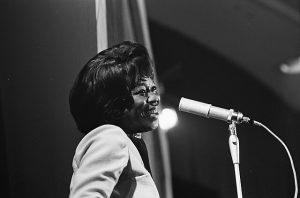Very Early/Times Remembered/My Bells
Bill Evans
Remembering Bill Evans
Click here to Support Jazz on the Tube
William John Evans graced the world on August 16, 1929, in Plainfield, New Jersey. His name has become synonymous with excellence in jazz piano, earning him a place among the pantheon of the greatest jazz pianists to have ever graced the stage. Revered by many as the most influential post-World War II jazz pianist, Evans’s musical genius left an indelible mark on the art form. His innovative use of impressionist harmonies, imaginative reinterpretations of classic jazz repertoire, distinctive block chords, and the hallmark of his rhythmically independent, almost “singing” melodic lines continue to shape and inspire contemporary jazz pianists. Notably, Evans stood apart from the trends of his era, resisting the allure of new styles like jazz fusion or free jazz that captured other musicians.
From the outset, Evans embraced classical training, honing his craft through rigorous study at Southeastern Louisiana University. The year 1955 saw him make his way to the vibrant streets of New York City, where he collaborated with the visionary bandleader and theorist, George Russell. By 1958, Evans had become a pivotal member of Miles Davis’s sextet, infusing his unique perspective into the group’s sonic tapestry. The pinnacle of their partnership came in 1959 with the creation of “Kind of Blue,” an iconic album that remains the best-selling jazz record of all time.
Stepping out of Davis’s orbit in late 1959, Evans embarked on his solo career alongside talents like Scott LaFaro and Paul Motian, forming a groundbreaking modern jazz trio. However, tragedy struck when LaFaro was lost in a fatal car accident just days after the trio’s monumental recording sessions for “Sunday at the Village Vanguard” and “Waltz for Debby” in 1961. After grappling with this profound loss, Evans reemerged from his introspective cocoon with a fresh trio, enlisting the prowess of bassist Chuck Israels.
In 1963, Evans pushed the boundaries of solo jazz recordings with “Conversations with Myself,” an innovative album achieved through the unconventional technique of overdubbing. His artistic journey brought him into the orbit of bassist Eddie Gomez in 1966, launching an inspiring partnership that would endure for over a decade. A series of successful albums followed, including notable releases like “Bill Evans at the Montreux Jazz Festival,” “Alone,” and “The Bill Evans Album.” Amidst this productive period, Evans found personal happiness, marrying Nenette Zazzarra in 1973, and the couple welcomed their son, Evan, who would later venture into the realm of film composition.
Behind the curtain of artistic triumph, Evans grappled with profound personal losses and battled drug addiction. The shadows of tragedy loomed large, as both his girlfriend Elaine and his brother Harry took their own lives. Struggling with heroin and later cocaine addiction, Evans’s journey was marked by periods of financial instability, strained relationships, and stifled creative output. Tragically, this tumultuous voyage came to an end with his passing in 1980. Yet, his legacy, his intricate melodies, and his transformative contributions to the world of jazz endure as a testament to his enduring spirit and musical brilliance.


